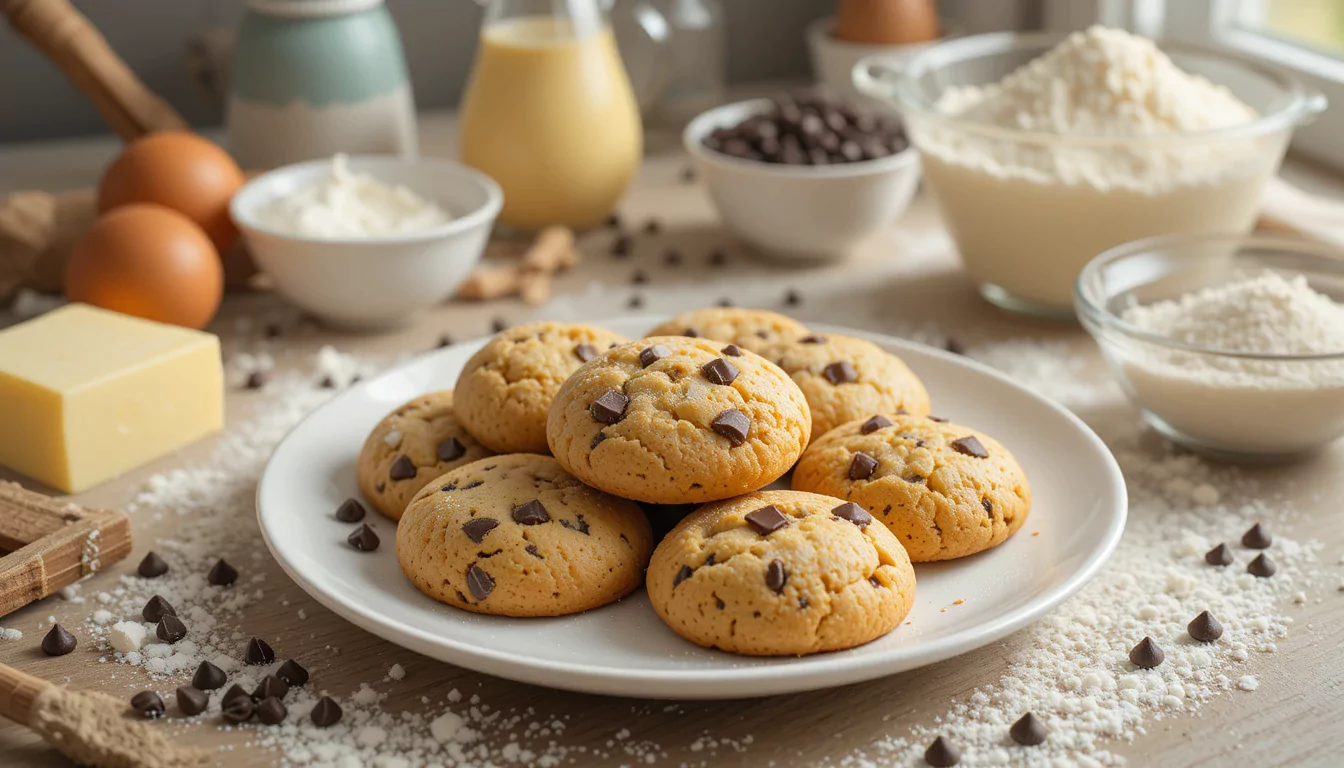Making good cookies is a rewarding experience, but the secret lies in understanding the science behind ingredients and techniques. Whether you want soft, chewy, or crispy cookies, each step plays a crucial role in achieving perfection. This guide explores every aspect of cookie baking to help you create irresistible treats every time.
Why Understanding the Basics Matters
Cookies are a universal favorite, but even minor missteps can impact their flavor, texture, and appearance. Knowing the science behind baking helps ensure consistent and delightful results.
For tips on achieving soft and chewy cookies, explore this guide to soft cookie baking. Additionally, understanding the impact of different ingredients can help you troubleshoot issues—learn more in this cookie chemistry article.
Essential Ingredients for Making Good Cookies
1. Use High-Quality Ingredients
- Butter vs. Margarine: Butter adds a rich flavor and smooth texture. Use unsalted butter for better control over salt levels.
- Vanilla Extract: Opt for pure vanilla extract for an authentic and deep flavor.
- Chocolate Chips: High-quality chocolate chips or chunks make a noticeable difference in taste.
For more inspiration, check out this classic chocolate chip cookie recipe, which emphasizes ingredient quality.
2. Master Sugar Ratios
- Brown Sugar vs. White Sugar: Brown sugar adds moisture and chewiness, while white sugar provides structure and crispiness. Adjust the ratio based on your desired texture.
- Liquid Sweeteners: Adding honey or molasses enhances chewiness and creates deeper flavor profiles.
3. Leavening Agents
- Baking Soda and Baking Powder: Baking soda helps cookies spread and become chewy, while baking powder makes them puffier and softer. Choose the right leavening agent based on your cookie goals.
Techniques for Perfect Cookies
1. Cream Butter and Sugar Properly
- Creaming introduces air into the dough, creating a light and fluffy texture. Avoid over-creaming, which can cause excessive spreading.
2. Chilling the Dough
- Chilling is essential for controlling spread and enhancing flavor. Refrigerate for at least 30 minutes or up to 24 hours for the best results.
Learn how chilling affects texture and flavor in this step-by-step guide.
3. Accurate Measuring
- Use a digital scale for precise measurements. Too much flour can make cookies dense, while too little sugar can result in excessive spreading.
Baking and Cooling Techniques
1. Bake at the Right Temperature
- Baking at the correct temperature ensures even cooking. Use an oven thermometer to maintain consistency.
2. Use Proper Baking Sheets
- Line baking sheets with parchment paper or silicone mats for even heat distribution and easier cleanup.
3. Cooling on a Wire Rack
- Let cookies cool on the baking sheet for 5 minutes before transferring them to a wire rack. This prevents sogginess and ensures they set properly.
For additional troubleshooting tips, visit this guide on common cookie mistakes.
Creative Variations for Your Cookies
1. Double Chocolate Cookies
- Add cocoa powder to the dough and replace semi-sweet chips with white chocolate for a unique twist.
2. Vegan Options
- Substitute butter with coconut oil and eggs with flaxseed meal to make vegan-friendly cookies.
3. Gluten-Free Variations
- Use a gluten-free flour blend to create cookies that everyone can enjoy.
Explore more creative ideas with this banana crumb cake recipe, which pairs beautifully with cookies for a dessert spread.
FAQs About Making Good Cookies
Why are my cookies flat?
Flat cookies often result from using warm butter or skipping the dough chilling step.
How can I make cookies softer and chewier?
Use more brown sugar, add an extra egg yolk, and chill the dough before baking.
Can I use salted butter instead of unsalted butter?
Yes, but reduce the recipe’s added salt to balance the flavors.
What makes cookies crispy?
Increase white sugar and bake at a slightly higher temperature for crispier cookies.
Conclusion
The secret to making good cookies lies in mastering the basics: using high-quality ingredients, measuring accurately, and applying the correct techniques. From chilling the dough to experimenting with flavors, every step contributes to creating delicious cookies.
Pair your cookies with a creamy dessert like this cheesecake with sour cream topping or a classic peach cobbler for a well-rounded treat. Experiment with variations, and enjoy the art of baking. Happy baking! 🍪

